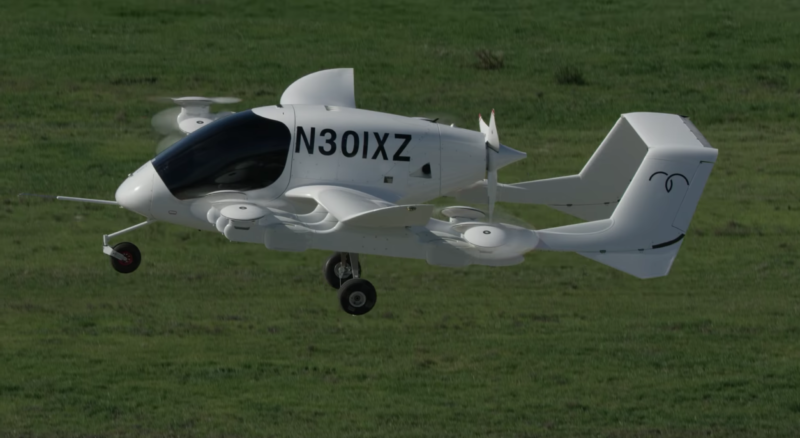Smart electric robotaks with vertical takeoff and landing appeared in New Zealand

For several years now, the media has been publishing news about flying cars, which may become the next generation of urban transport. Over time, the usual rumors turned into quite serious news and articles based on real data, not assumptions. Most discussed the startup Kitty Hawk, which is funded by Google co-founder Larry Page. Last year, a startup introduced a test machine, which was positioned as a flying taxi.
But now it has become known that a startup has something even more interesting. Namely, the aircraft Cora. This is an electric vehicle capable of vertical take-off and landing. Moreover, this system works in automatic mode.
A new type of vehicle is not just a concept, it is a system developed for the specific purpose of starting work as an air taxi in New Zealand. According to the New York Times, the company has signed an agreement with the government of this country. The main clause of the agreement is the permission of regulators to fly aerotaxi.
')
Actually, the company plans to deploy the service itself within three years. The startup management acknowledges that aerotaxi testing could hardly be conducted in the United States, since the United States Federal Aviation Administration has very strict rules. This does not mean that a similar body in New Zealand fulfills its duties carelessly, not at all. But in New Zealand - one of the most democratic laws in the world, with which the New Zealanders themselves are very satisfied.
But back to the essence of the post. The fact is that the system, represented by members of the development team, has been improved over five years. Batteries, electric motors, software - all this has been tested and tested hundreds of times.
As it turned out, the electric motor, despite its power, is lighter than its fuel “colleague”. Instead of two heavy jet engines, you can use several electric motors, which are much less heavy. Moreover, their power is the same or even higher than that of modern aircraft engines. However, so far we are not talking about long-distance flights, because in order for the "electric aircraft" to fly somewhere, batteries are also required.
The most capacious of them are unable to provide the flight of the aircraft over long distances, so you have to be content with flights between nearby cities or fly on airplanes that fly on conventional fuel. So far, the maximum distance that can overcome electrotaxi is 100 km. This does not allow the vehicle to be used to move between cities, but inside the metropolis is just what you need.
I must admit that this is not the first such project. Now there are more and more companies developing flying taxis. One of them, Joby Aviation, "raised" $ 100 million investment in February of this year. The German company Lilium also received $ 90 million, they will go to create another model of the electric aircraft. Not only relatively small startups enter this business. In January, Intel CEO introduced another device called the Volocopter . The announcement was made at CES.
Uber and in general is going to create a deployed infrastructure of flying taxis, and in the near future. To this end, the company is developing both its own aircraft, and buys them from other companies.


Source: https://habr.com/ru/post/410867/
All Articles